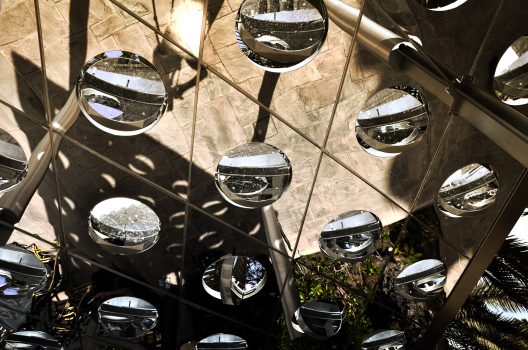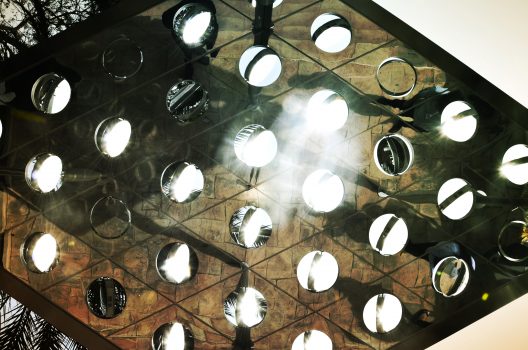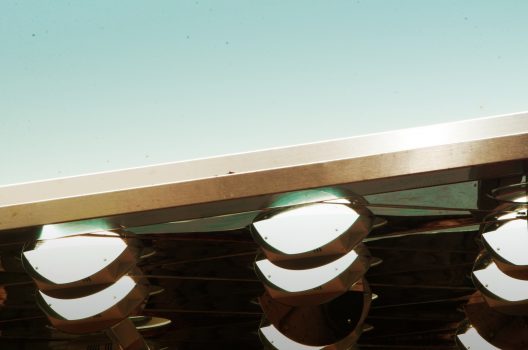International design and innovation office Carlo Ratti Associati, in collaboration with Dubai’s Museum of the Future, has developed a dynamic, reflecting canopy which can provide digital shading and climate adaptation in cities. The first working prototype – called “Sun&Shade” – was unveiled in Dubai on February 14th, 2017 during the World Government Summit, as part of the “Reimagining Climate Change” exhibit at the Museum of the Future.
The Sun&Shade canopy is based on an array of mirrors that track the sun. Much like a sunflower, each mirror can move on a double axis and reflect the sun’s rays away from the ground – allowing the precise control of the desired level of shading and natural cooling underneath. Reflected rays, in turn, are concentrated on a photovoltaic receiver, located a safe distance away, that generates electric power.
“In developing Sun&Shade we were inspired by the Middle Eastern tradition of shading in architecture and public space,” comments Carlo Ratti, Professor at the Massachusetts Institute of Technology in Boston and a founding partner of Carlo Ratti Associati: “Sun&Shade aims to bring this concept to the next level, allowing shading to be digitally controlled. While reflected sun is concentrated far away, producing heat at a safe distance from people, the space underneath the canopy cools down.” The result is a system whose applications could be extraordinary in terms of increasing climate comfort, potentially allowing vast outdoor portions of cities such as Dubai to become inhabitable all year long – while producing clean energy for the community.
Sun&Shade always knows where the sun is. Based on the sun’s location and on the user’s input, it can tilt mirrors to different degrees, allowing people to interact with sunlight in creative ways – from selecting the precise level of shade underneath, to composing dynamic drawings with light to reinterpret the traditional patterns of Arabic architecture. Another way to think about the project is to imagine it as a reinterpretation of a small concentrated solar power (CSP) plant, which as a result of its controllability can be used in urban areas, and not only in rural ones. Concentrated sun could also be used for more experiential and communal uses – such as roasting food on a sun-heated stone plate.
“The canopy is half power infrastructure, half architecture for public space,” says Antonio Atripaldi, project manager at Carlo Ratti Associati: “With its hybrid nature, it allows us more control over our surroundings. In the near future, we can imagine extending the canopy to cover streets or open squares in hot, arid climates such as Dubai’s, allowing people to enjoy the outdoors all year round. Conversely, in a cold place we could concentrate rays underneath the canopy, to heat the environment.”
At a time when climate change is becoming increasingly pressing, Carlo Ratti Associati aims to explore how architecture can help with adaptation and prevention.












